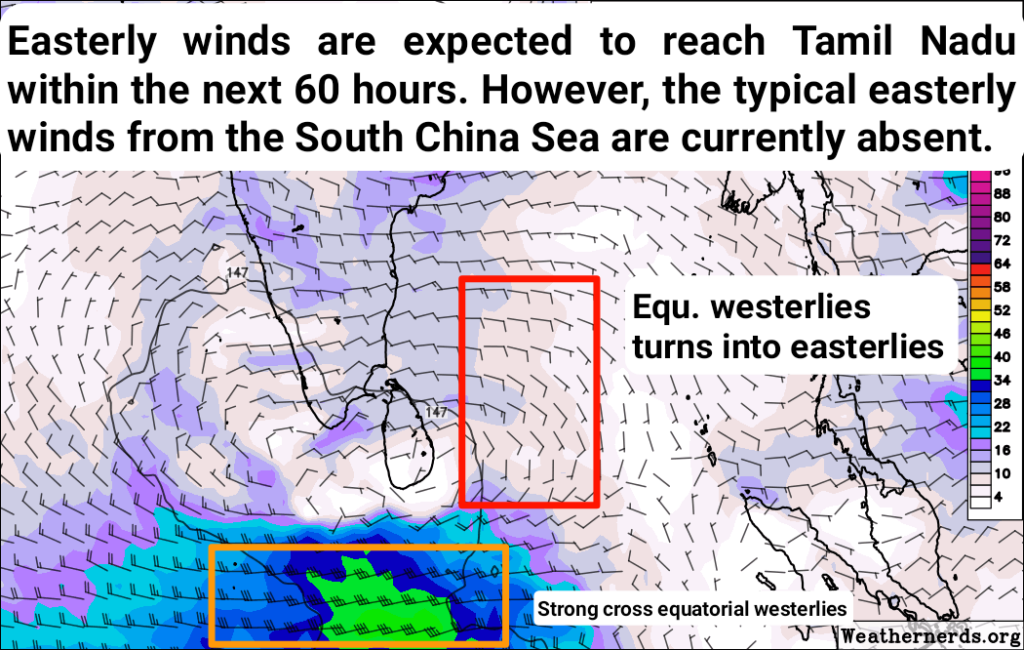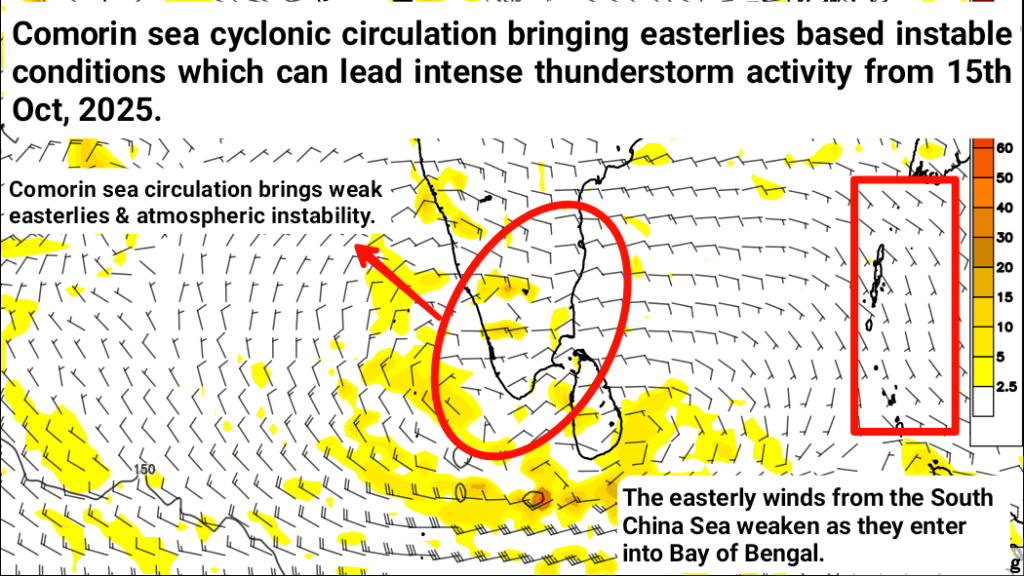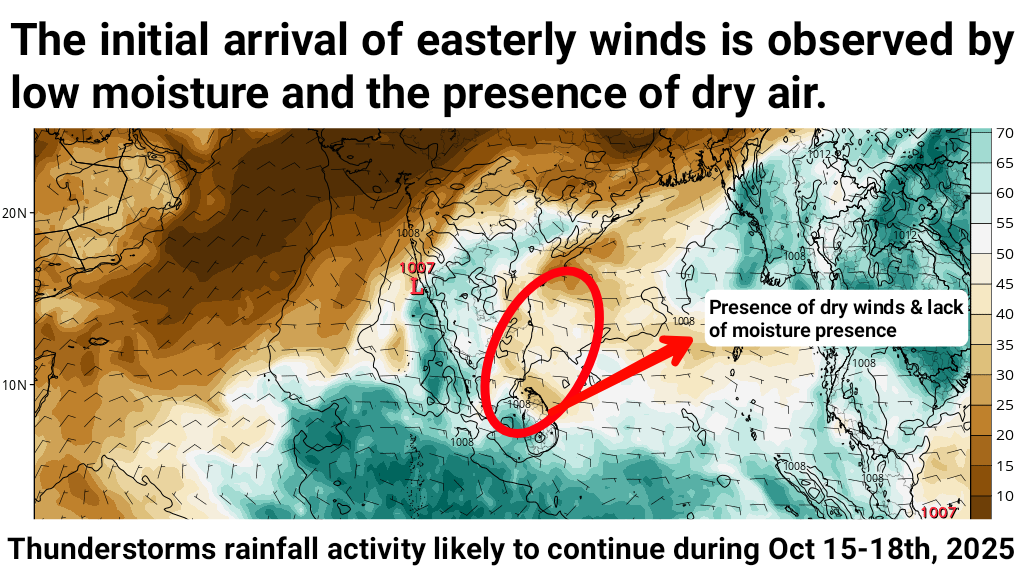The India Meteorological Department (IMD) is expected to declare the onset of the Northeast Monsoon (NEM) over Tamil Nadu between October 16-18, 2025. However, historical trends and current atmospheric conditions suggest a weak onset, continuing a pattern observed over the past five years.
Let’s dive into the details of what’s in store for this year’s monsoon onset.
Historical context
The most delayed NEM onset in the last 15 years occurred on November 1, 2018.
Analyzing the past five years onset trend:
1. 2024: October 15 (Weak onset, limited to Chennai suburbs)
2. 2023: October 16 (Weak onset)
3. 2022: October 29 (Weak onset)
4. 2021: October 25 (Weak onset)
5. 2020: October 28 (Weak onset)
Notably, the last five onsets have been predominantly weak, with 2024 seeing dominant westerlies south of Chengalpattu latitude. The important thing we have to note that “simultaneous withdrawal of the Southwest Monsoon and onset of the Northeast Monsoon” often results in subdued rainfall activity since it started 2019, a trend likely to persist in 2025.
Key Takeaways
Pseudo-Easterlies Arrival:
Weak pseudo-easterlies are expected to reach Tamil Nadu’s coast within 48–60 hours, signaling the initial phase of the 2025 NEM

Rainfall Patterns:
Coastal areas may experience early morning to noon showers as easterlies establish, while evening and night rains taper off. Interior regions are likely to see active evening and nighttime thunderstorms.
Hot and Humid Conditions:
Weak easterlies, combined with low moisture and convergence, will likely create hot and humid weather across Tamil Nadu.
Weak Onset Conditions:
Insufficient moisture and convergence may lead to a monsoon onset declaration without widespread or heavy rainfall, indicating a weak start. However, enjoy the joyful rains.
Thunderstorm Activity:
Thunderstorms are expected to dominate until stronger easterlies arrive, potentially bringing significant rains on or even after onset.

Detailed Analysis
1. Weak Cross-Equatorial Flow:
==> The onset is driven by weak pseudo-easterlies, fueled by cross-equatorial westerlies. Robust easterlies, typically originating from the South China Sea, are absent, signaling a subdued monsoon start. (Refer to Pic 1)
2. Dry Air and lack of Moisture:
==> From October 14–17, 2025, weak easterlies will be accompanied by dry air and insufficient moisture, limiting the potential for heavy rainfall.

3. East-West Shear Zone Influence:
==> The East-West shear zone, crucial for monsoon onset, remains above 13°N, leading to unstable wind patterns and hindering robust easterly flow. (Refer to Pic 4).
4. Absence of Planetary waves:
==> There is no significant planetary wave presence seen during oct 15- 20th, 2025. Equatorial Rossby wave likely to arrive East Indian Ocean around 20th Oct, 2025.
Conclusion
The 2025 Northeast Monsoon onset in Tamil Nadu, expected between October 16-18, is likely to be weak due to insufficient moisture, dry air, and feeble easterly winds. While thunderstorms may dominate initially, widespread monsoon rains may require the arrival of stronger, full-fledged easterlies.
Additionally, a potential low-pressure system forming in the South Bay of Bengal around October 22–23, 2025, could influence subsequent weather patterns, bringing more significant rainfall. Tamil Nadu may need to wait a few days post-onset for typical monsoon conditions to fully establish.
